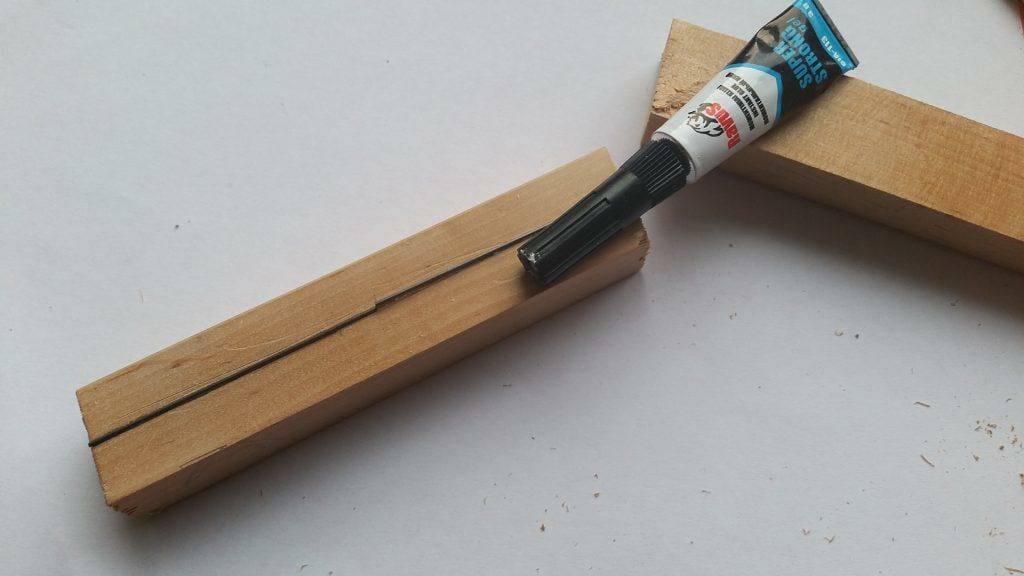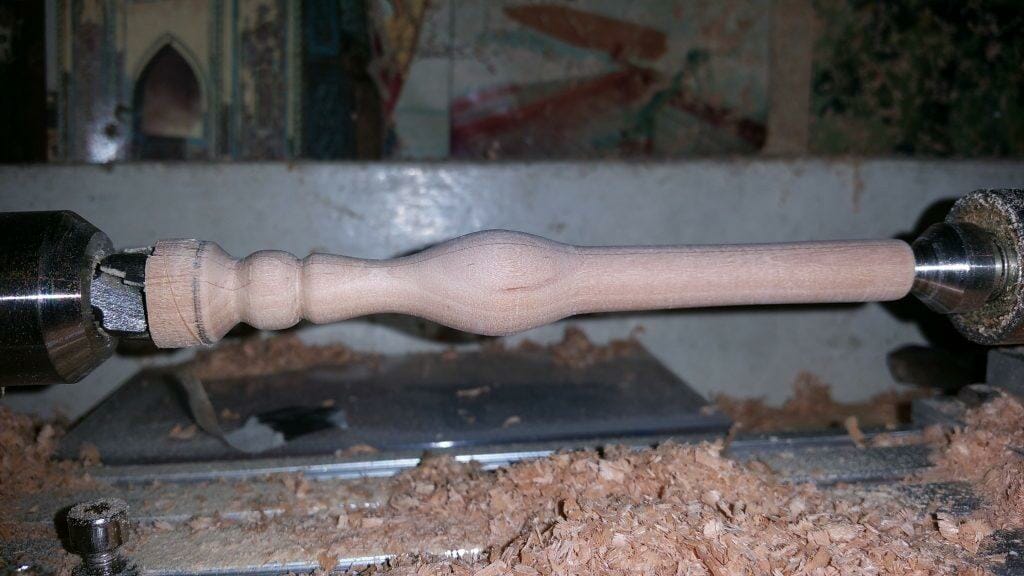There are woodturners, who make nothing else, but pens. I am very new to woodworking in general – I’ve completed only a handful of projects – and I don’t want to invest into proper equipment to make pens. However, that doesn’t mean I cannot have some fun and make, let’s say, a pencil. So that is what I did and here is how.
Since I knew I am just going to have some fun without some specific goals, I did not pay much attention to the materials. I went to the office supplies store and purchased a box of leads for mechanical pencils. I asked for the thickest ones they had, but it still turned out to be pretty thin. Especially having in mind I wanted to make a fat pencil.
I cut a couple of pieces of black alder and sanded them on their flattest side. This gave me two flat surfaces for a good glue joint. Then I took a straight edge and made a faint line down the middle of one piece. I had to carve out a groove for the lead to sit in.

My method was less than perfect. The groove as not very consistent at all, but again – I was just having some fun without any specific goals. When both grooves were completed and I made sure pieces mate well enough, I glued in the lead with CA glue.

Since lead was floating around, I immediately glued both wood pieces together as well. This gave me a nice blank for my pencil. A couple of days later I mounted it on my tiny baby lathe and started thinking about the shape I should go for.

Of course, at first the blank became round. At this point I could leave it as is – it would be a very thick pencil.

Then I started looking for a shape. I didn’t really know what I wanted, but I wanted an outside and inside curves and a small bead. At least, that is what I eventually decided. I used a single fingernail gauge for the entire project.



I sanded it to 600 grit, took it off the lathe and cut of that little piece from the end. Then I was able to mount it back to the lathe and carefully sand that little bead at the end.

I could have sharpened it on the lathe, but I decided not to try. It would be quite simple, but somehow my pencil ended up having its lead not in the very centre. That, of course, is a problem. So I sharpened it using just a pencil sharpener and a small chisel to bring tiny shy lead to the surface all around.



This is nothing to be proud of, but it was a simple and fun project. Much simpler than that spoon I turned last time. Now, onto the next project – maybe it will be a pen this time?




